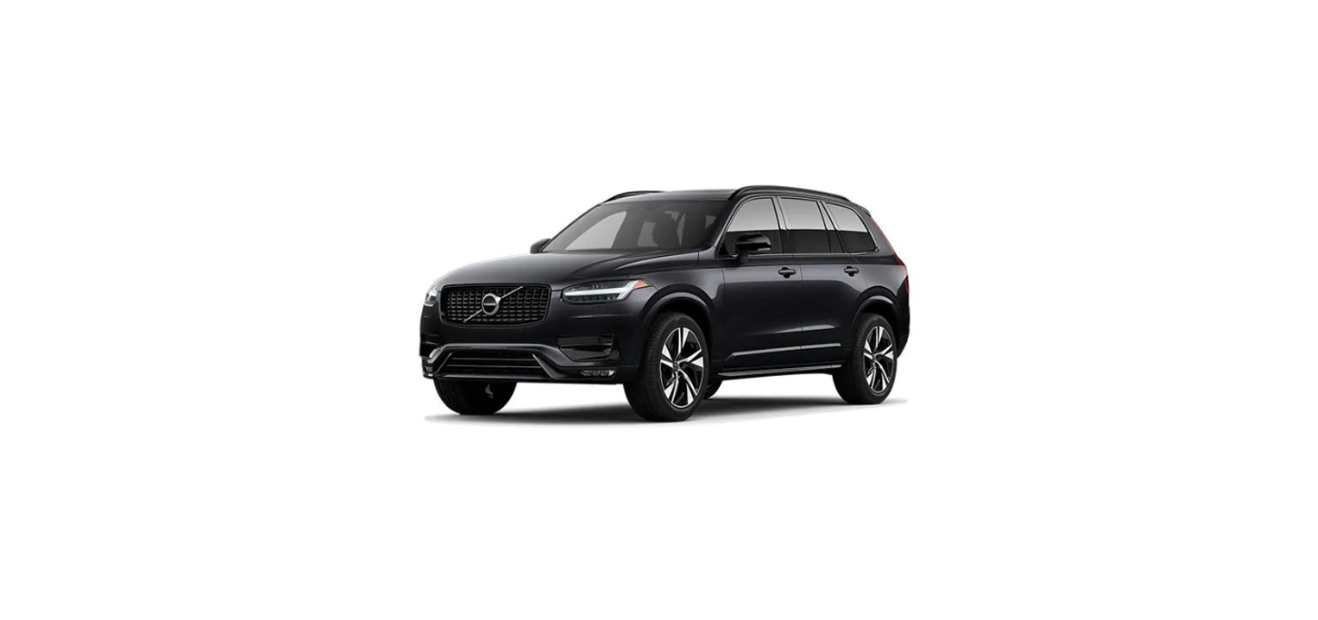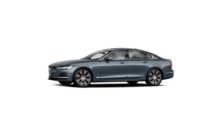Remember not to clip or hook the seatbelt to hooks or other interior fittings, as this prevents the belt from tightening properly.
The seatbelts and airbags interact. If a seatbelt is not used or is used incorrectly, this may diminish the protection provided by the airbag in the event of a collision.
Never modify or repair the seatbelts yourself. Volvo recommends that an authorised Volvo workshop should be contacted. If the seatbelt has been subjected to a major load, such as in conjunction with a collision, the entire seatbelt must be replaced. Some of the seatbelt’s protective properties may have been lost even if the seatbelt does not appear damaged. The seatbelt must also be replaced if it shows signs of wear or damage. The new seatbelt must be type-approved and designed for installation at the same location as the replaced seatbelt.
Putting on and taking off seatbelts
Make sure that all passengers have fastened their seatbelts before starting to drive.
- Pull out the seatbelt slowly and make sure it is not twisted or damaged. Make sure that the seatbelt is correctly fitted in the belt guide available for the second seat row’s centre seat. (Available for five and seven-seat variants.)
Note
The seatbelt is equipped with an inertia reel that is locked in the following situations:- if the belt is extended too quickly.
- during braking and acceleration.
- if the car leans heavily.
- when driving in sharper bends.
- Lock the belt by inserting the locking tab in the intended buckle.
- A loud “click” indicates that the belt has locked.
Warning
Always insert the tongue of the seatbelt into the buckle on the correct side. The seatbelts and buckles would otherwise possibly not function as intended in the event of a collision. There is a risk of serious injury.
- A loud “click” indicates that the belt has locked.
- In the front seats and in the outer seats in the second seat row the seatbelt can be adjusted for height.
Press together the seat mounting and move the seatbelt up or down. Position the belt as high as possible without it chafing against your throat. The seatbelt must pass over the shoulder (not down over the arm). - Tension the hip strap over the lap by pulling the diagonal shoulder belt up towards the shoulder.
The hip strap must be positioned low down (not over the abdomen).
Each seatbelt is designed for only one person.
Remember not to clip or hook the seatbelt to hooks or other interior fittings, as this prevents the belt from tightening properly.
Do not make any damages on seatbelts nor insert any foreign objects into a buckle. The seatbelts and buckles would then possibly not function as intended in the event of a collision. There is a risk of serous injury.
- Press the red button on the seatbelt buckle and then let the belt retract.
- If the seatbelt does not retract fully, feed it in by hand so that it does not hang loose.
Make sure that the seatbelt is correctly fitted in the belt guide available for the second seat row’s centre seat. (Available for five and seven-seat variants.)
Seatbelt tensioner
The car is fitted with standard seatbelt tensioners and electric seatbelt tensioners that can tension the seatbelts in critical situations and collisions.
All the seatbelts are equipped with a standard seatbelt tensioner. The seatbelt tensioner tensions the seatbelt in the event of a collision with sufficient force in order to more effectively restrain the occupant.
The driver and front passenger seatbelts are equipped with an electric seatbelt tensioner. The seatbelt pretensioner works together and can be activated together with the driver support systems for assistance at risk of collision and Rear Collision Warning. (Option/accessory.) In critical situations, such as panic braking, driving off the road (e.g. the car rolls into a ditch, lifts off the ground or hits something in the terrain), skidding, or risk of collision, the seatbelt can be tensioned by the seatbelt tensioner’s electric motor. The electric seatbelt tensioner helps to adjust the occupant to a better position, reducing the risk of striking the car’s interior and improving the effect of safety systems, such as the car’s airbags. When the critical situation has come to an end, the seatbelt and the electric seatbelt pretensioner are restored automatically, but they can also be restored manually.
If the passenger airbag is deactivated, the electric seatbelt tensioner on the passenger side will also be deactivated.
Never modify or repair the seatbelts yourself. Volvo recommends that an authorised Volvo workshop should be contacted. If the seatbelt has been subjected to a major load, such as in conjunction with a collision, the entire seatbelt must be replaced. Some of the seatbelt’s protective properties may have been lost even if the seatbelt does not appear damaged. The seatbelt must also be replaced if it shows signs of wear or damage. The new seatbelt must be type-approved and designed for installation at the same location as the replaced seatbelt.
Resetting the electric seatbelt tensioner
The electric seatbelt tensioner is designed to be reset automatically, but the seatbelt tensioner can be reset manually if the belt remains extended.
- Stop the car at a safe place.
- Unfasten the seatbelt and then refasten it.
- The seatbelt and electric seatbelt tensioner are reset.
Never modify or repair the seatbelts yourself. Volvo recommends that an authorised Volvo workshop should be contacted. If the seatbelt has been subjected to a major load, such as in conjunction with a collision, the entire seatbelt must be replaced. Some of the seatbelt’s protective properties may have been lost even if the seatbelt does not appear damaged. The seatbelt must also be replaced if it shows signs of wear or damage. The new seatbelt must be type-approved and designed for installation at the same location as the replaced seatbelt.
Door and seatbelt reminder
The system reminds unbelted occupants to wear a seatbelt, and also warns about an open door, bonnet or lid.
Graphics in the driver display with different types of warnings. The warning colour on the door and tailgate is dependent on the vehicle’s speed. The driver display’s graphics show which seats in the car are occupied by belted and unbelted passengers. The same graphic is also shown if the bonnet, tailgate or any door is open. The graphic can be acknowledged by pressing the O button on the right-hand steering wheel keypad.
As soon as the graphic has been acknowledged, or after a while if the graphic is not acknowledged, it can switch to a smaller format that appears at the top edge of the driver display.
Visual reminder in the roof console. A visual reminder is given in the roof console and by means of the warning symbol in the driver display. The acoustic reminder is dependent on speed, driving time and distance. The belt status of the driver and passengers is shown in the driver display’s graphic when a belt is buckled or unbuckled. Child seats are not covered by the seatbelt reminder system.
A visual and acoustic reminder remind the driver and front seat passenger to use a seatbelt if either of them is not wearing one.
The seatbelt reminder in the rear seat has two subfunctions:
- Provides information on which seatbelts are being used in the rear seat. The driver display’s graphics are shown when the seatbelts are in use.
- Reminding that a seatbelt in the rear seat is unfastened during a journey by means of a visual and acoustic reminder. The reminder will cease once the seatbelt has been put on again.
If the bonnet, tailgate, fuel filler flap or a door is not closed properly, the driver display’s graphic shows what is open. Stop the car in a safe place as soon as possible and close the source of the warning.
If the car is driven at a speed lower than approx. 10 km/h (6 mph) then the driver display’s information symbol illuminates.
If the car is driven at a speed higher than approx. 10 km/h (6 mph) then the driver display’s warning symbol illuminates.




